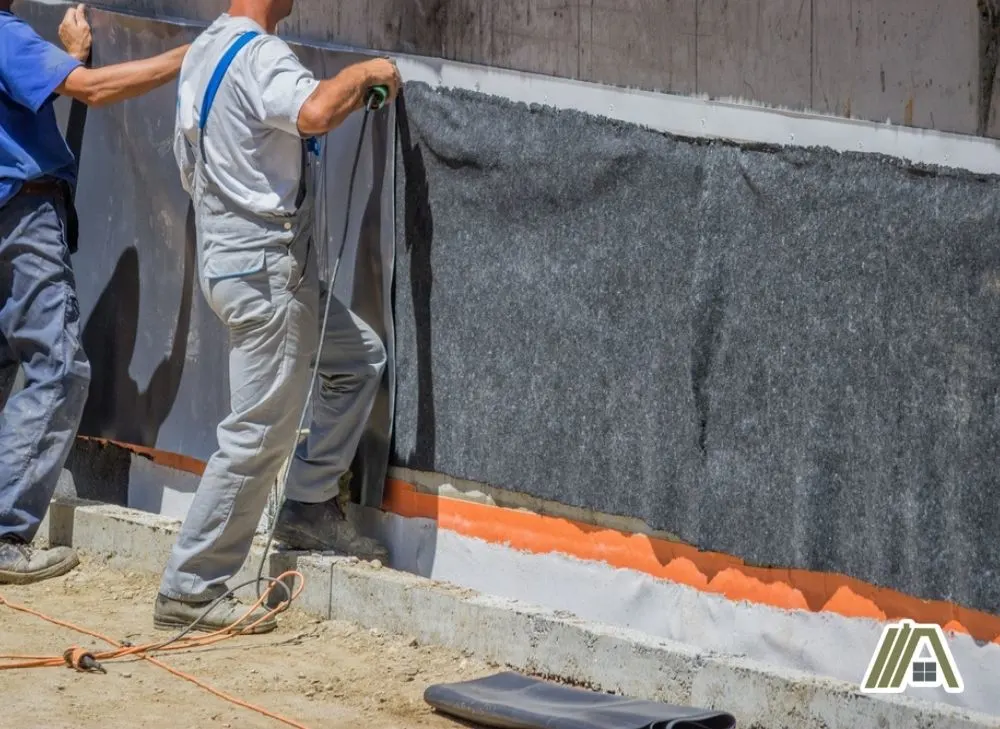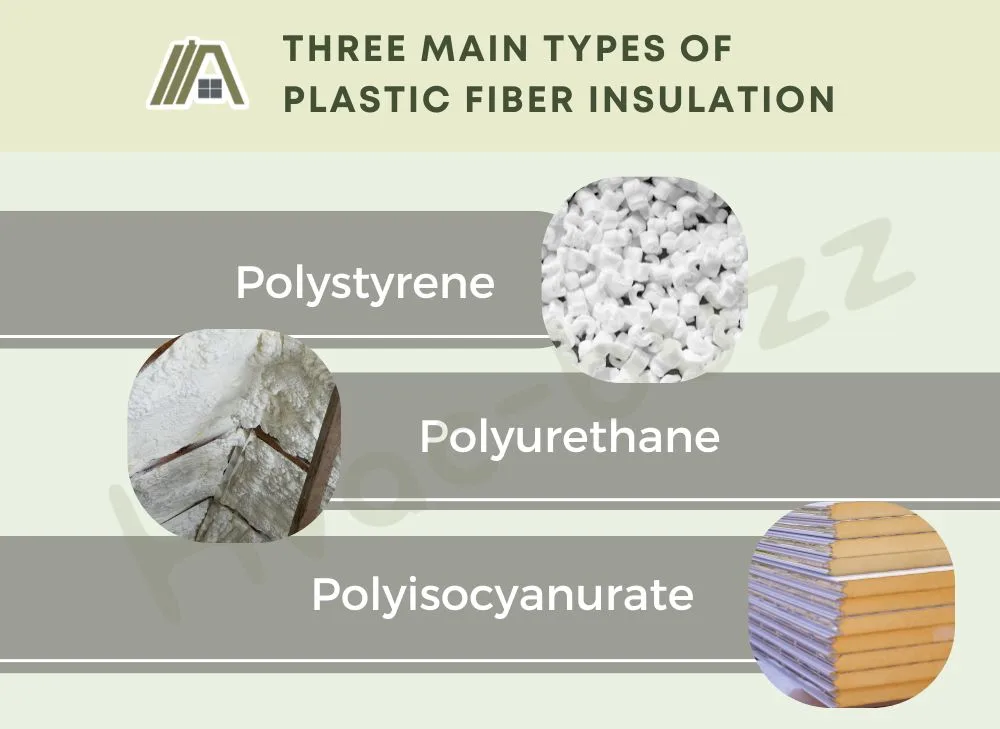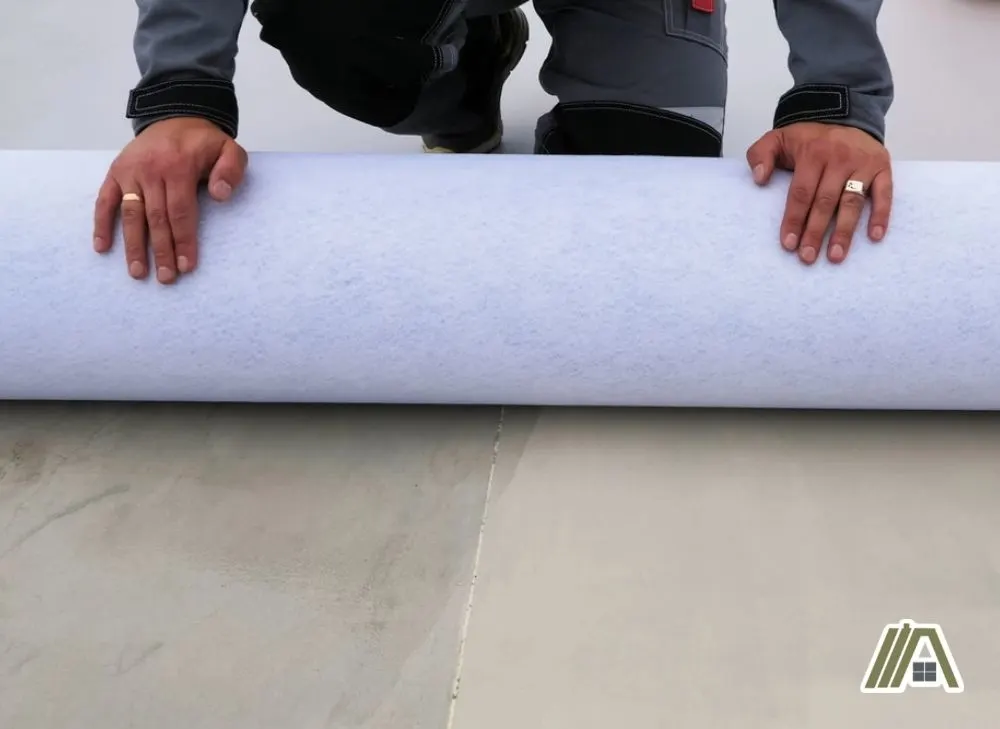When adding new or replacing old insulation, it is important to consider all of your options. If you are disinterested in the more common types of insulation, such as fiberglass and cellulose, then perhaps a less common insulation, like plastic fiber, may be the one.
But is plastic fiber worth it, or is there a reason why it isn’t as popular? Let’s take a look at how well it performs and if it is worth your investment.

Plastic fiber insulation can be polystyrene, polyurethane, or polyisocyanurate. It is white and made of recycled milk bottles. It has an R-value of 4-7.2. It costs $0.03-$1.50 per board foot. Polyurethane (spray foam) is the most dangerous of the three.
What Is Plastic Fiber Insulation?
Plastic fiber insulation is a type of insulation that is created using plastic, unlike most insulation types that are made using cellulose, fiberglass, or mineral wool. It is typically found in blanket sheets or as rolls. Other times, however, it can be found as a spray.

Like most insulation types, plastic fiber insulation is made using recycled materials; For instance, plastic fiber is made primarily using plastic from recycled milk bottles.
Also like most insulations, it will last for upwards of 60-75 years. However, this only applies if the insulation is well taken care of. The lifespan can be greatly shortened if the insulation experiences water damage or another type of damage.
Appearance and Use
Plastic fiber insulation primarily comes in white; however, it is available in other colors, such as yellow.
Depending on the type of plastic fiber insulation you want, it will be available in a couple of different forms. In most cases, plastic fiber comes in sheets. This makes it easy to install yourself since you won’t need to hire a professional.
Sometimes, the plastic can also come in the form of spray foam insulation. In this case, it is recommended that you hire a professional to install your insulation.
You can install plastic fiber insulation around pipes, between walls, and wherever else you need insulation, such as in your attic walls.
Inherent R-Value of Plastic Fiber Insulation
Different insulation types will be able to insulate to different degrees. To compare effectiveness, you can compare the R-values of different insulations.
R-value is the measure of how well insulation can keep heat from entering and exiting a space that it insulates. A higher R-value correlates with a better ability to insulate. Plastic fiber insulation typically has an inherent R-value ranging between R4 to R7.2.
Thickness Guide
Using the range of R-values above, you can get an estimate of how thick your insulation would need to be to achieve certain R-values.
With the large range between the lower and upper estimates, it is important to take into account what type of plastic fiber insulation you are using and how you are installing it.
There are three main types of plastic fiber insulation:
- Polystyrene
- Polyurethane
- Polyisocyanurate
Polyisocyanurate is going to have a much higher R-value than polyurethane, and polystyrene has the lowest R-value of the three.

Cost of Plastic Fiber Insulation
Plastic fiber insulation has a range of costs depending on the type and form of the plastic fibers. Overall, however, it is quite a bit more expensive than more common types of insulation, like fiberglass.
Polystyrene will typically cost you between $0.30 to $0.45 per board foot, depending on the insulation method and the structure of the insulation you get.
Polyurethane will cost you around $0.44 to $1.50 per board foot. Since it is typically a spray foam, you will likely also need to pay for a professional to install it for you.
Polyisocyanurate will cost you, on average, $0.70 per board foot.
For comparison, fiberglass insulation typically costs between $0.30 to $1.50 per board foot.
Is It Easy to Install?
The ease of installing plastic fiber insulation is dependent on if you are installing blanket sheets or spray foam.
For blanket sheets, it is much less irritating to touch the insulation and move it. On the other hand, it is harder to cut and handle with standard tools that you would typically have. Overall, you are able to do it yourself without a great hassle.
When installing spray foam insulation, there are options to do it yourself. However, it is easy to mess up. In addition, you need to be sure that you have and are wearing proper safety equipment. That is why it is instead recommended to have a professional install it for you.
Is Plastic Fiber Insulation Dangerous?
Unfortunately, plastic fiber may be a vessel for dangerous chemicals to enter your house. If you are not careful, you can easily introduce formaldehyde or volatile organic compounds (VOCs) into the air in your house.
This is especially true if you are opting for the spray foam installation. If you are not careful, you can inhale multiple harmful chemicals during the process of installation.
Even more, if you do not have proper ventilation in your house, you will likely experience a substantial decrease in the air quality of your home.
It is also possible that there may be asbestos in your plastic fiber insulation if it is older. New plastic insulation is not allowed to contain asbestos.
Benefits of Plastic Fiber Insulation
Compared to other options, plastic fiber insulation is one of the most effective insulators. This means that plastic fiber insulation can be much thinner than other types of insulation to achieve a certain R-value.
In addition, it can be relatively easy to install, depending on the type of plastic fiber you use. This means you can save money on a contractor.

Overall, it is one of the best options if you are trying to maximize the space you have in a room.
Drawbacks of Plastic Fiber Insulation
Before committing, it is important to remember that plastic fiber insulation can have some serious drawbacks.
For one, it is one of the more expensive types of insulation. This means that any money you may have saved on a contractor would be lost.
More importantly, it can pose a serious health risk if you do not install it correctly. Even when installed correctly, however, if you do not allow it enough time to cure (spray foam), then you will likely introduce harmful chemicals into your home.
Sources
https://www.oecd.org/chemicalsafety/risk-management/sustainable-plastic-products%20insulation.pdf
https://www.daviddarling.info/encyclopedia/P/AE_plastic_fiber_insulation.html
https://www.ahfc.us/iceimages/manuals/building_manual_ap_1.pdf
https://www.homeadvisor.com/cost/heating-and-cooling/install-rigid-foam/
https://www.ewg.org/healthyhomeguide/insulation/
https://www.indoordoctor.com/blog/toxic-spray-foam-insulation/
